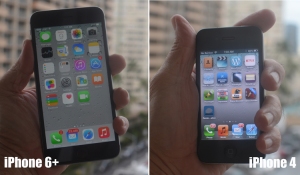My worst grade in high school was in Spanish I. Our teacher was tough, and the pace was blistering. I struggled to learn the vocab, grammar, and odd verb conjugation charts. I found the culture interesting, but the rest of the class was just frustrating and seemingly pointless to my future. Guess what subject I mainly teach now? That’s right – Spanish. What turned my worst grade and most frustrating class into my career?
Getting to see the world outside my little East Tennessee community and building relationships with people who at first seemed so different from me changed the way I saw the world. I was inspired to travel abroad, learn a language, join a local Hispanic church, and live with an undocumented family my last semester of college. Those relationships and experiences made language learning fun and transformed pointless grammar exercises into real-world challenges that unlocked boundaries that separated people.
How can I show them the world when we can’t leave our classroom?
I share my stories with my students and perhaps it inspires some to consider traveling one day, but how can I motivate students right now? How can I show them the world when we can’t leave our classroom? In my opinion, one of the most underused tools in education is videoconferencing. While expensive systems with fancy cameras and monitors can make it seamless, most teachers already have the resources to videoconference. If they have a smartphone, tablet, or computer, then they probably have everything they need!
As a foreign language teacher, I use videoconferencing in my classroom in many different ways. For example, my friend in Nicaragua, Emanuel, converses with my students. My sister shares stories about her semesters abroad in Nicaragua and Honduras. Another friend, Garret, has talked from Germany about his year abroad in Argentina and how it helped him to learn German and get a job with BMW. My students love hearing stories from guest speakers projected in the front of the classroom. They have fun asking questions and always learn something new. Continue reading
Filed under: Ed Tech, Education, Hardware, High School, Innovation, Instruction, Instructional Design, Instructional Media, Instructional Resource, Instructional Technology, International, K-12 Schools, Language, Language Learning, Mobile Technology, Multimedia, Online Learning, Technology, Trends & Issues | 1 Comment »




























 John Mark Walker: "If educational communities can continue to push platform integration and content portability, in the future, students may be able to design their own personalized degrees from smaller, modular chunks that cross institutional barriers" (
John Mark Walker: "If educational communities can continue to push platform integration and content portability, in the future, students may be able to design their own personalized degrees from smaller, modular chunks that cross institutional barriers" ( Richard Koubek
Richard Koubek
 Judith McDaniel
Judith McDaniel Tim Fraser-Bumatay: "Although the format leaves us far-removed physically, the online forum has its own sense of intimacy" (Judith McDaniel, "
Tim Fraser-Bumatay: "Although the format leaves us far-removed physically, the online forum has its own sense of intimacy" (Judith McDaniel, " Ryan Kelly: "For me to be able to work with people clear across the country for an extended period of time opened me up to new things" (Judith McDaniel, "
Ryan Kelly: "For me to be able to work with people clear across the country for an extended period of time opened me up to new things" (Judith McDaniel, " Daniel Herrera: "As a Mexican American, I know that words of identity are powerful; so to discuss white privilege with my professor and classmates in a face-to-face class would have been terrifying and impossible" (Judith McDaniel, "
Daniel Herrera: "As a Mexican American, I know that words of identity are powerful; so to discuss white privilege with my professor and classmates in a face-to-face class would have been terrifying and impossible" (Judith McDaniel, "












 Cathy Gunn: "Traditional methods for effecting change at my institution aren’t getting us even to a trickle yet, let alone to thinking about or planning for a wave!" (
Cathy Gunn: "Traditional methods for effecting change at my institution aren’t getting us even to a trickle yet, let alone to thinking about or planning for a wave!" (










